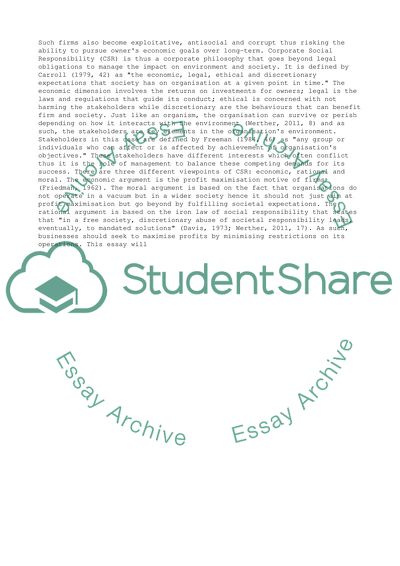Cite this document
(The Role of Stakeholders within Corporate Social Responsibility Essay Example | Topics and Well Written Essays - 2750 words - 2, n.d.)
The Role of Stakeholders within Corporate Social Responsibility Essay Example | Topics and Well Written Essays - 2750 words - 2. https://studentshare.org/management/1853371-contemporary-issues-in-management
The Role of Stakeholders within Corporate Social Responsibility Essay Example | Topics and Well Written Essays - 2750 words - 2. https://studentshare.org/management/1853371-contemporary-issues-in-management
(The Role of Stakeholders Within Corporate Social Responsibility Essay Example | Topics and Well Written Essays - 2750 Words - 2)
The Role of Stakeholders Within Corporate Social Responsibility Essay Example | Topics and Well Written Essays - 2750 Words - 2. https://studentshare.org/management/1853371-contemporary-issues-in-management.
The Role of Stakeholders Within Corporate Social Responsibility Essay Example | Topics and Well Written Essays - 2750 Words - 2. https://studentshare.org/management/1853371-contemporary-issues-in-management.
“The Role of Stakeholders Within Corporate Social Responsibility Essay Example | Topics and Well Written Essays - 2750 Words - 2”. https://studentshare.org/management/1853371-contemporary-issues-in-management.


